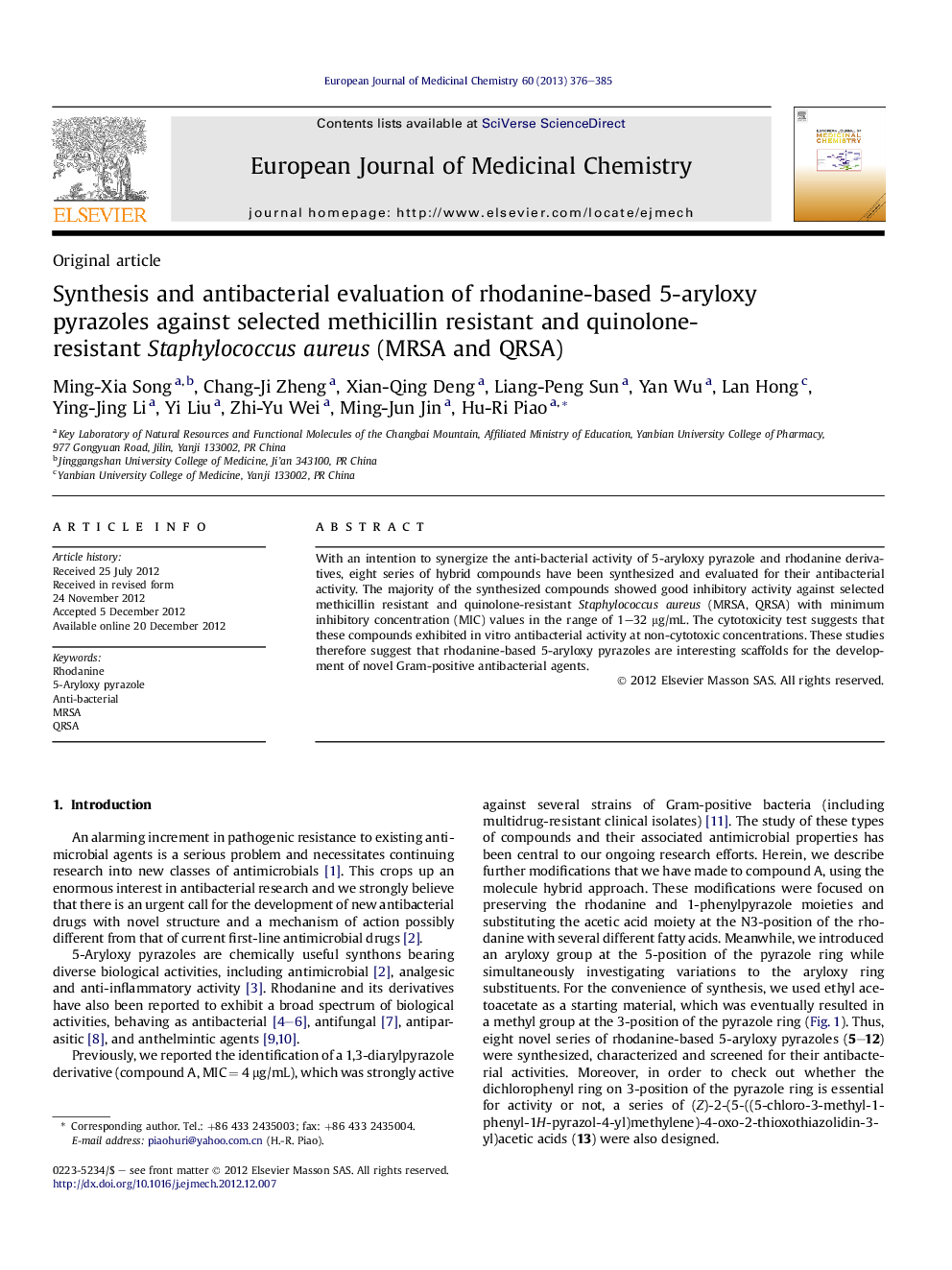| Article ID | Journal | Published Year | Pages | File Type |
|---|---|---|---|---|
| 1399284 | European Journal of Medicinal Chemistry | 2013 | 10 Pages |
With an intention to synergize the anti-bacterial activity of 5-aryloxy pyrazole and rhodanine derivatives, eight series of hybrid compounds have been synthesized and evaluated for their antibacterial activity. The majority of the synthesized compounds showed good inhibitory activity against selected methicillin resistant and quinolone-resistant Staphylococcus aureus (MRSA, QRSA) with minimum inhibitory concentration (MIC) values in the range of 1–32 μg/mL. The cytotoxicity test suggests that these compounds exhibited in vitro antibacterial activity at non-cytotoxic concentrations. These studies therefore suggest that rhodanine-based 5-aryloxy pyrazoles are interesting scaffolds for the development of novel Gram-positive antibacterial agents.
Graphical abstractEight novel series of (Z)-5-((3-methyl-5-phenoxy-1-phenyl-1H-pyrazol-4-yl)methylene)-2-thioxothi-azolidin-4-ones rhodanine derivatives (5–12) were synthesized, characterized and screened for their antibacterial activities.Figure optionsDownload full-size imageDownload as PowerPoint slideHighlights► Eight series of rhodanine-based 5-aryloxy pyrazoles (5–12) were synthesized. ► Some compounds showed the strongest activity with MICs of 1 μg/mL. ► Compounds exhibited antibacterial activity at non-cytotoxic concentrations.
